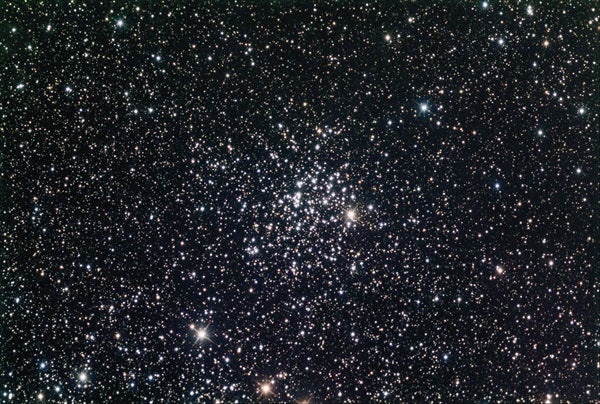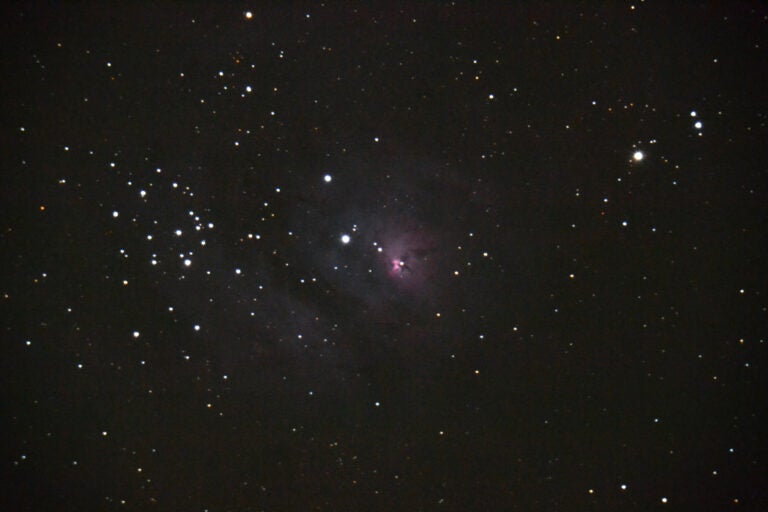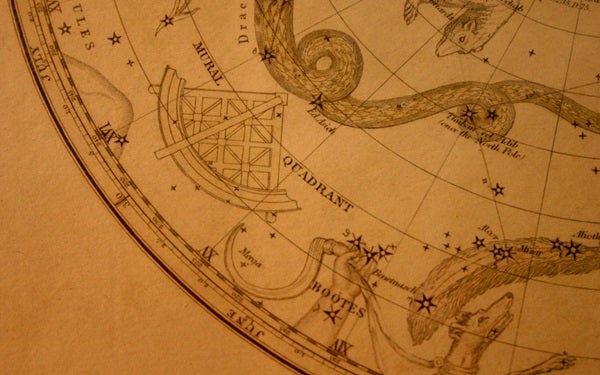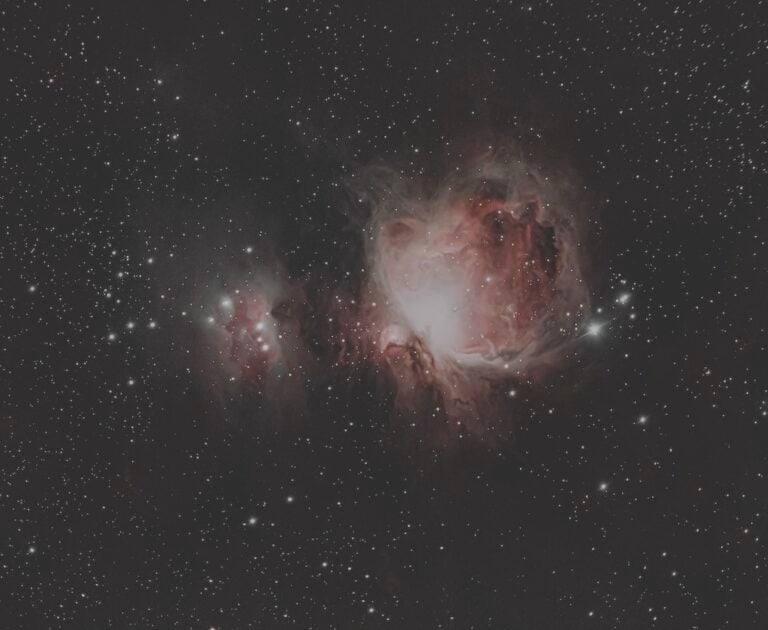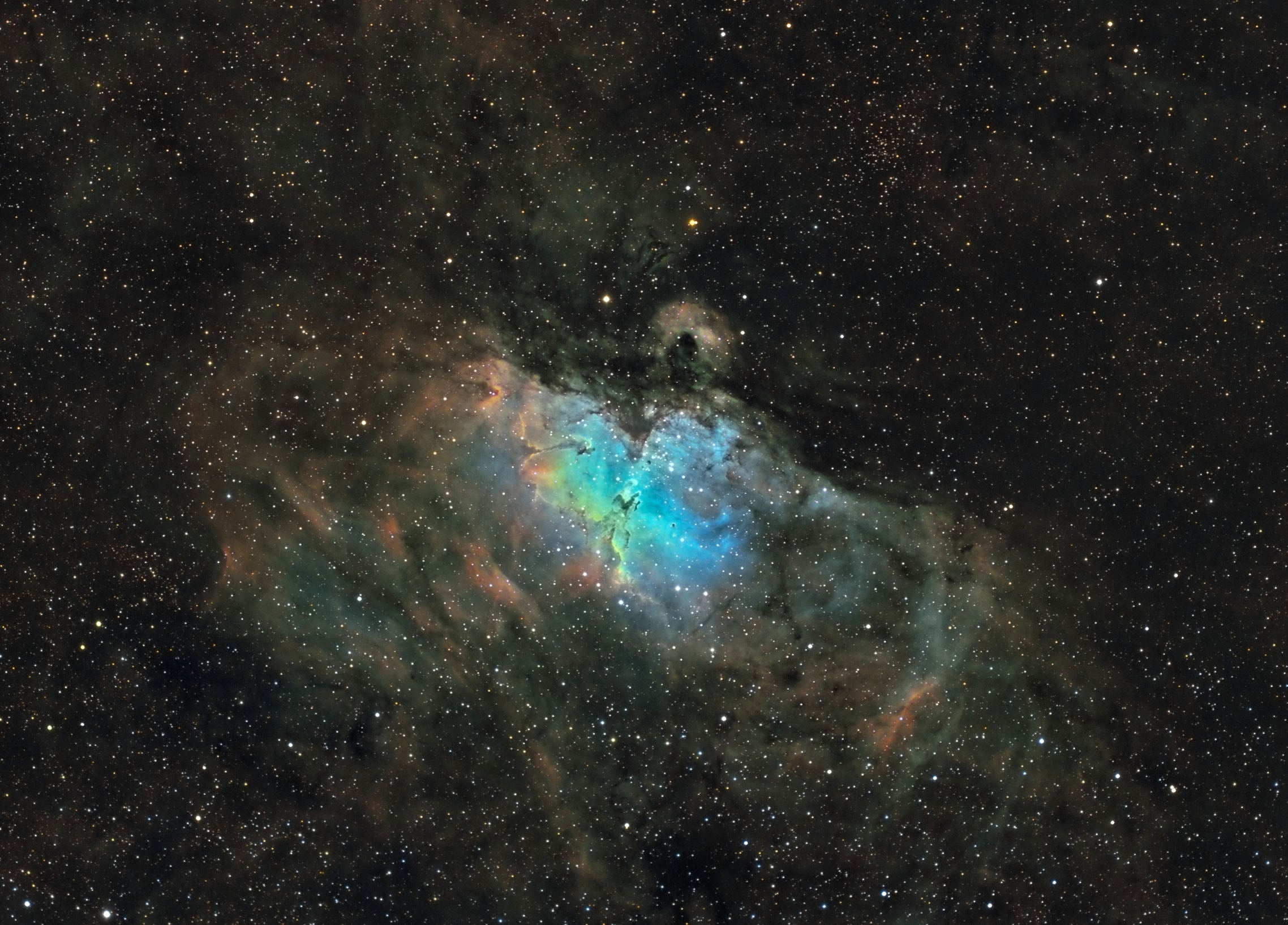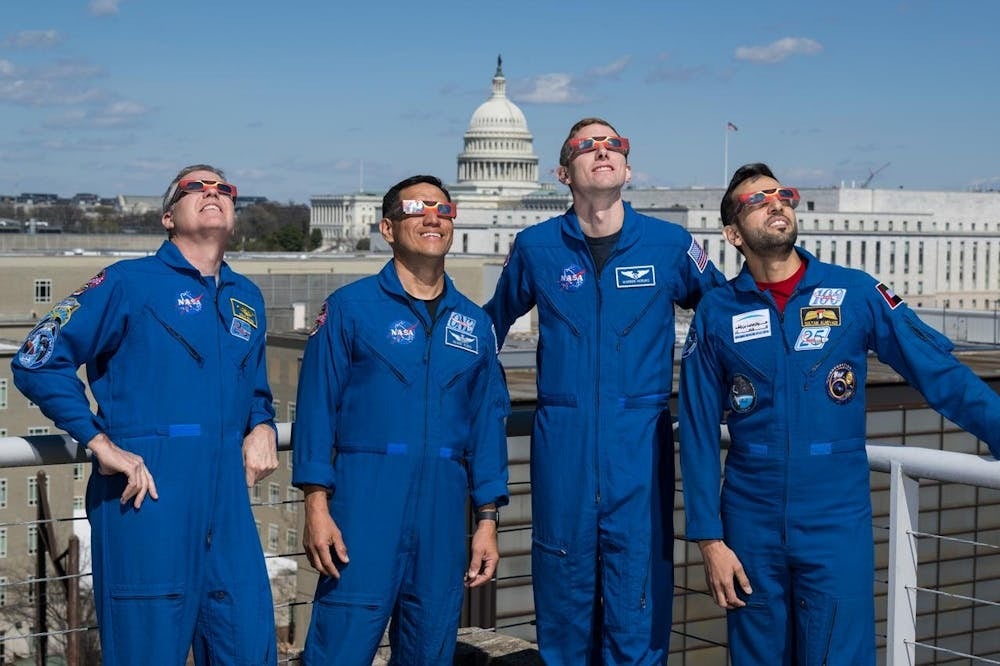The gentle glow of our galaxy flows past those five stars, bringing with it many binocular treasures. You’ll need to crane your neck to enjoy them, however, so take a moment to set up a chaise lounge. Then lie back and raise your binoculars high.
This month, let’s first turn our attention toward the western portion of Cassiopeia. By connecting a line from Schedar (Alpha [α] Cassiopeiae) to Caph (Beta [β] Cas) and then extending it an equal distance beyond, you’ll arrive at the open cluster M52. Discovered on September 7, 1774, by Charles Messier himself, M52 is an easy catch through just about any binocular. An estimated 200 stars call the cluster home, though only a few are bright enough to be seen in binoculars. The rest blend into a fog of stardust.
Just beyond M52 is a slender diamond of four 5th- and 6th-magnitude stars, along with an arc of four fainter stars curving farther northwest. To the late Massachusetts amateur astronomer John Davis, these stars appeared to form an airplane. As he once explained it to me, “The plane’s brightest star (red giant 4 Cassiopeiae) marks a light at the end of the eastern wing, while a lone 6th-magnitude star lies at the tip of the western wing. A short arc of faint stars stretching northward forms the plane’s crooked tail.” The diamond-shaped wingspan of Davis’ Airplane extends 1° tip to tip, as does the curved fuselage.
Scan back toward Caph and then hook southwest to 4.5-magnitude Rho (ρ) Cassiopeiae. If you recall in last month’s column, we visited Mu (μ) Cephei, which is one of the largest stars visible through binoculars. Well, Rho Cas may not be quite as large, but it’s still between 400 and 500 times the diameter of our Sun. If we replaced our Sun with Rho, the outer edge of its photosphere would engulf the four inner planets and extend into the asteroid belt. Rho is classified as a yellow hypergiant, an extremely rare type of star. Yellow hypergiants are among the most luminous stars, and only 15 are known in the Milky Way. In his book, Observing the Night Sky with Binoculars (Cambridge University Press, 2008), fellow columnist Stephen James O’Meara describes Rho as a “delicious pumpkin color,” a most appropriate description as the season of pumpkin spice everything draws to a close.
As you admire Rho, you’ll probably notice a round glow less than a degree south-southeast. That is NGC 7789, a rich open cluster of over 500 stars lying 8,000 light-years away. NGC 7789 is often referred to as Caroline’s Rose after Caroline Herschel, who discovered this copious cluster in 1783. None of its stars is brighter than 11th magnitude, unfortunately, which is below the threshold of most binoculars. Instead, we see their collective glow spanning about the same apparent diameter as the Full Moon. If your binoculars are 70mm or larger, however, there’s hope of spotting a few of those dim denizens peeking out from the haze.
How many can you count?
Our last stop this month is a fun asterism invented by British amateur astronomer Eddie Carpenter. Known as Eddie’s Coaster, this meandering, double-dipping wave of faint stars lies about 3° north-northeast of Gamma (γ) Cassiopeiae, at the center of the W. Eddie’s Coaster includes more than a dozen stars spanning 2.7°. The chance alignment reminded Carpenter of an amusement park roller coaster, which led to the asterism’s name. Admittedly, as we face north this month, the coaster will appear upside down, but use your imagination. If we ride the coaster from west to east, it starts at 7th-magnitude HD 4841 and then slowly ascends. After topping out, it drops to 8th-magnitude HD 5915, only to rise again before a second, steeper drop brings our ride to an end at 7th-magnitude HD 7156. All together, they stand out nicely through my 10×50 binoculars from my suburban yard.
Have you ever found an asterism that you’d like to share with the rest of us? Contact me through my website, www.philharrington.net, and tell me about it.
Until next month, remember that two eyes are better than one.

